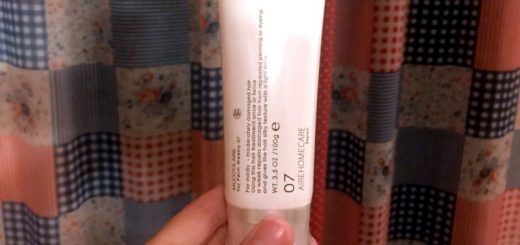How to Choose the Right Shampoo? Know the 3 Types!

Hi everybody! To choose the right shampoo, we should first ask: why we are using the shampoo we are using? Perhaps the celebrity in the commercial was using it. Perhaps we liked the packaging. Or perhaps it’s a popular brand.
If this is you, then you’re going to want to read on! The most important factor in choosing a shampoo is not the brand or packaging, rather the cleansing agent that is used in the formulation.
These cleansing agents divide shampoos into three main categories. The condition of our hair and scalps may worsen if we use the shampoos without understanding what they do.
Even so, it’s difficult enough trying to decipher the names of the ingredients on the shampoo packaging which we have never heard before. It becomes an enigma when they are written in Japanese!!
In this article, we are going to break things down for everyone, by looking at the available types of shampoo and how to choose among them. You should be able to choose the right shampoo that will treat your scalp and hair kindly by the end of this!
Understanding Scalp Type
Before we can choose the right shampoo, it is important for us to know our own scalp type and condition. When choosing skincare products, we need to understand our own skin type. But do we have the same level of understanding when it comes to our scalps?
You can check your own scalp type at home:
1) After washing your hair, use the hair dryer till your hair is about 80% dry.
2) Use a piece of blotting paper to test your forehead around where the hair grows as time goes by.
If a layer of oil forms after 30 minutes, you have an oily scalp type.
If it forms after 1 hour, you then have a normal scalp type.
Should there is no layer of oil after 2 hours, you have a dry scalp.
Scalp Type
1) Oily scalp
Even though you shampoo everyday, does your scalp become oily when it comes to the following afternoon or evening?
Those of us with oily scalp are often concerned about the amount of sebum. As such, we often use shampoo that has very strong cleansing strength, or use a lot of strength while washing our hair. However, if we overwash and remove more sebum than needed, our scalp compensates by overproducing sebum. This is counterproductive from what we want to achieve.
For oily scalps, we should take care to choose a shampoo that is gentle on the scalp, and to massage gently during hair wash.
2) Normal scalp
This scalp type is considered suitably taken good care of, so no additional care is required.
3) Dry Scalp
Maybe your scalp has been itching often, and you often find dandruff on your hair and clothes?
The cause of dry scalp is similar to that of the oily scalp, which is mostly the excess removal of sebum. If we have dry scalp, we’ll need to find a weak shampoo with low stimulation to wash with, preferably one that has a humectant (moisture retaining ingredient).
Generally, the gentlemen tend to have oily scalps, while the ladies tend to have dry scalps. However, the scalp type can also change according to the hormonal imbalance, age, stress, seasons etc, therefore it’s important that we adapt different care methods accordingly.
How to Choose the Right Shampoo
As we’ve mentioned from the outset, picking the shampoo by its cleansing agent is the most important factor to choose the right shampoo. This is crucial because water and cleansing agent makes up 80% of the shampoo.
The average composition of a shampoo is:
Water 40~50%
Cleansing Agent 40~45%
Humectant 4~5%
Conditioner 0.5%~1%
Scented ingredient 0.2~1%
Shampoo types
There are three categories of Japanese shampoos: soap-based, amino acid-based, and sulfate-based. Each contains a different cleansing agent for a different purpose.
1) Soap-based
Merit: Almost no stimulation to the scalp.
Demerit: Washing strength is very high.
Soap-based shampoos have very strong cleansing strengths, and will be able to wash off the sebum on the scalps. It differs from person to person, although people with oily hair may find this strong cleansing shampoo to be a good fit. However, soap-based shampoos will change our slightly acidic hair into alkaline base, so the hair might feel starchy after wash. Be sure to use an acidic rinse to neutralise the effect.
The main ingredients shown on soap-based shampoos usually include soap ingredients (potash soap ingredients), soap content (pure soap content), or sodium or potassium salt of fatty acids.
2) Amino acid-based
Merit: The stimulation on the scalp is weak.
Demerit: Can be pricey. Weak cleansing strength.
Japanese salons and hairdressers often use these amino acid-based shampoos. Since most parts of our bodies are made up of the same amino acid composites, amino acid-based shampoos are able to protect the proteins of our hair while gently washing it.
Amino acid-based shampoos are recommended for people with dry or sensitive scalps, since they are mild, wash gently, and have low stimulation on the scalp.
People with oily scalps who wants to use amino acid-based shampoos should choose one that has a strong cleansing strength. Otherwise, it is possible that the sebum is not washed off properly, consequently leading to clogged pores and cause skin troubles.
The main ingredients shown on amino acid-based shampoos usually include OO-cocoil, cocamide-OO etc.
3) Sulphate-based
Merit: Foams easily, and is on the cheaper side.
Demerit: High stimulation on the hair and scalp.
Most shampoos on the market are sulphate-based, due to the fact that they foam easily and gives a relieving feel after use. These sulphate-based shampoos are strong in cleansing, and could do more damage to the hair and scalp when compared to other shampoos. This is why some specialists do not recommend the use of these sulphate-based shampoos.
The main ingredients shown on sulphate-based shampoos usually include sodium laureth sulfate, sodium dodecyl sulfate, olefin sulfonic acid etc.
It is said that itchiness, rash, and dandruff are caused by sodium laureth sulfate (SLES), while hair loss and hair thinning are caused by sodium dodecyl sulfate (SLS). Perhaps those of us who are facing these concerns would like to stop using such shampoos just to be on the safe side.
Product Intro: Soap-based shampoos
Seeing how different these shampoos are, we need to choose the right shampoo based on the type of cleansing agent that is present in them. With that, we are now ready to look at some of Japanese shampoos!
Shabondama Mutenka Soap Shampoo and Rinse

(via shabon.com)
This actually contains only two types of ingredients: water and potash soap ingredients. Since it does not contain any other ingredients, this is a great fit for anyone who just wants a simple, safe shampoo to use without anything extra.
The hair will feel squeaky after use, so the Rinse, which contains citric acid, will balance the alkalinity out, returning the hair to a silky feel.
The Shabondama Mutenka Soap Shampoo and Rinse are formulated with citric acid water and potash soap ingredients.
COW Milk Soap

(via cow-soap.co.jp)
It’s alright to use a bar of soap too if your hair is short, and is neither permed or coloured. The COW Milk Soap is a long-beloved product in Japan, and is multi-use. It can be used as a body soap, and a facial wash, and of course, as a shampoo.
Moisture-retaining ingredient squalene is formulated into the red box, protecting the scalp from dryness from over-removal of sebum.
The red box COW Milk Soap’s formulation include soap ingredients, scent, butter from milk, squalene, water, stearic acid, titanium oxide and EDTA-4na. The blue box’s ingredients include soap ingredients, scent, butter from milk, water, stearic acid, titanium oxide and EDTA-4na.
Sonbahyu Soap

(via lippli.jp)
The Sonbayu Soap features a moist feel after wash, and the main ingredient comes from horse oil. Critic acid is also in the formulation, and as a result the hair doesn’t feel heavy from alkalinity after washing.
The Sonbahyu Soap contains soap ingredients (horse oil, palm oil, water, sodium hydroxide, fatty acid from palm seed, sodium chloride), scent (cypress fragrance) and sodium citric acid.
Product Intro: Amino acid-based shampoos
Moist Diane Oil Shampoo Botanical Moist

(via moist-diane.jp)
Recently, this plant-derived “Botanical” shampoo has been gaining attention. It is formulated with sacram, often said to be six times more moisturising than hyaluronic acid. Therefore this shampoo is specially recommended for people with dry scalps.
The Moist Diane Oil Shampoo Botanical Moist is considered one of the strongest cleansing strength among amino acid-based shampoo, because it is able to even remove hair styling products from the hair.
Ingredients include:
Water, sulfosuccinic acid (C 12 – 14) pareth – 2 Na, lauramide DEA, cocamidopropyl betaine, cocamide DEA, cocoyl methyl taurine Na, cocoyl glutamic acid TEA, polyquaternium – 10, DPG, argan oil polyglyceryl – 6 ester, Betaine, cocoyl alanine TEA, rosemary leaf extract, Altair root extract, chamomile flower extract, sage leaf extract, lavender flower extract, flower / leaf extract, toed calendula flower extract, damask rose flower extract, niga yoyogi extract, santryleigh extract, BG , Prune seed extract, silobana lupine seed oil, theobroma grunge florse seed fat, mango seed oil, baobab seed oil, algana spinosa nucleus oil, carapag grandia seed oil, sclerokari Biurea seed oil, sagallamine extract, zein, honey, hydrolyzed pea protein, Satzakura flower extract, Europe birch bark extract, Suisen dolly polysaccharide, cete aramid ethyl diethonium hydrolyzed rice protein, Na chloride, Bauraurate BG, polysorbate 20, glycerin , Citric acid, sodium hydroxide, malic acid, tocopherol, ascorbic acid, EDTA-2Na, benzoic acid Na, phenoxyethanol, fragrance, caramel
REMAYU Hair Shampoo Amino Acid

(via libatape.jp)
This shampoo is formulated with horse oil, which gives the hair and scalp moist and gleam. You may want to consider using this if you:
- want to tackle hair loss, hair thinning, and dandruff, or have hair that dries easily;
- are looking for something that returns the scalp environment back to normal;
- are concerned about the hair cuticles; or
- want something that moisturises the hair.
Its ingredients include:
Water, cocamidopropyl betaine, lauroyl methyl alanine Na, cocamide DEA, sodium chloride, horse oil, water soluble collagen, glycyrrhizinic acid 2K, Assembly extract, Otaninidin root extract, Birch bark extract, Watermelon extract, Orange oil, Lemon peel oil, 1,2-hexanediol, glycerin, BG, behenamidopropylmethylamine, aminopropyl dimethicone, polyquaternium-10, pentetoic acid 5Na, PPG-9, citric acid, Na citrate, phenoxyethanol, tocopherol
Kracie Himawari

The Kracie Himawari (Kracie pronounced as Koo-rah-see-eh) formulation includes four types of amino acid-based cleansing agents. Anyone with dry or sensitive scalps may like to check this out since it is remarkably gentle on the scalp.
The ingredients include:
Cocoyl methyl taurine Na, palm kernel fatty acid amidopropyl betaine, cocamidomethyl MEA, cocoyl glutamic acid TEA, lauroyl sarcosine TEA, cocamide MEA, glycol distearate, cocoyl glutamic acid 2Na, coconut oil fatty acid PEG-7 glyceryl, sunflower seed oil, sunflower seed Extract, sunflower flower extract, sunflower bud extract, acetyl glucosamine, glycerin, Na chloride, myristic acid, cocoyl threonine Na, guar hydroxypropyl trimonium chloride, cocoyl glutamate Na, citric acid, polyquaternium-10, polyquaternium-49, polyquaternium-7 , Ethanol, EDTA – 2 Na, Na benzoate, fragrance, caramel
MUCOTA Adllura Aire Emollient CMC Shampoo 01, 02

Haircare professionals created the highly popular Adllura Aire for home use. It includes eight different types of amino acid-based cleansing agents, and works from inside the hair to repair any damage to the hair cells.
01 gives a voluminous finish, thus recommended for anyone who wants volume, and its ingredients include:
Water, sulfosuccinic acid (C 12 – 14) pareth – 2 Na, cocoyl alanine Na, glycerin, cocamide DEA, cocamidopropyl betaine, PCA – Na, lactate Na, phenoxyethanol, arginine, polycotonium – 10, aspartic acid, PCA, glycine, alanine , Serine, paline, citric acid, BG, isoleucine, threonine, proline, jojoba seed oil, histidine, phenylalanine, methylchloroisothiazolinone, methylisothiazolinone, rosemary leaf extract, fragrance
On the other hand, 02 gives a moist finish, as such recommended to anyone who wants consistency in their hair. The ingredients include:
Water, sulfosuccinic acid (C 12 – 14) pareth – 2 Na, cocoyl alanine Na, glycerin, cocamide DEA, cocamidopropyl betaine, cetrimonium chloride, PCA – Na, lactate Na, polyquaternium – 10, phenoxyethanol, arginine, aspartic acid, PCA , Stearartonium chloride, glycine, alanine, cedes-20, serine, paline, citric acid, BG, isoleucine, threonine, proline, jojoba seed oil, histidine, phenylalanine, methylchloroisothiazolinone, methylisothiazolinone, rosemary Leaf extract, dimethicone, fragrance
Other notable ingredients include jojoba seed oil (effective for scalp acne or dandruff) and rosemary leaf essence (encourages blood flow and hair growth).
You now know how to choose the right shampoo!
We have learnt how to choose the right shampoo by identifying the features of the three types available: soap-based, amino acid-based and sulphate-based.
Very often we don’t give the composition of haircare products enough attention like we give skincare products. However, we have learnt how the finish and effect on scalp differs from type to type. Let’s choose the right shampoo by paying attention to the back of the shampoo bottle (the ingredients section), especially if we want to avoid using certain ingredients, or want to tackle any hair problems.

| ..:: Visit us @ WONECT.COM ::.. |
| :: HAIR CARE :: | :: SKIN CARE :: |
  |
  |












